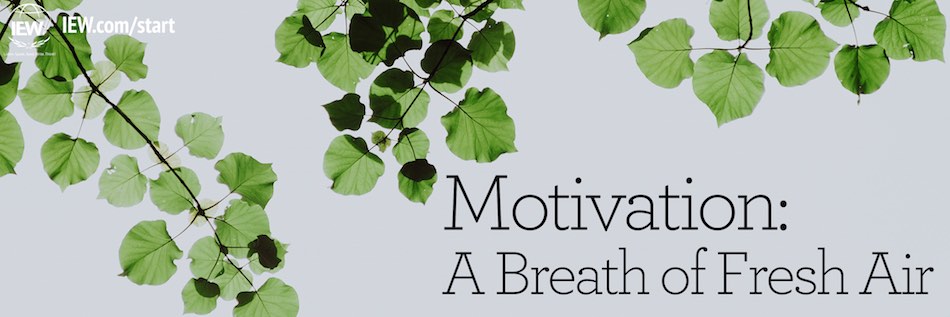
As educators, we all dream of the day that our students are motivated and excited about each assignment. Imagine if instead of having to pester and hound our stubborn students, they cheerfully and eagerly started on their papers. Go on, take a moment to breathe it in. Nice, isn’t it? While I am not going to promise you that after reading this you will instantly have students dying to write essays and begging for math problems, I am willing to say you will have a better idea of how to foster and offer motivation.
Perhaps the best insight we can find when it comes to motivation is to first ask ourselves a crucial question. What is motivation? Motivation is “the desire to do; the interest or drive.”
Motivation is both intrinsic and extrinsic, and understanding this duality is pivotal in helping our kids stay focused and happy. Extrinsic motivation, the simpler of the two, is what educators can offer—this can sometimes cause an over-reliance on rewards, or worse, punishment. Conversely, when it comes to intrinsic motivation, we must think about what we can foster—this can be challenging. Both aspects, intrinsic and extrinsic, if understood, can help our children not only finish their studies cheerfully but also grow as individuals.
Extrinsic motivation is normally where educators start. If you finish this assignment, you get a gold star! or, If you don’t get this done now, you will have to finish it before dinner. While these tactics offer some immediate results, they tend to not have lasting effects. After the reward or punishment is gone, there is no reason for the student to keep working. However, rewards and punishments are not the only things that can be offered to help with motivation. Providing resources and sharing your skills can be much more powerful gifts. If you have ever had a kid who struggles with reading, reading to him can immediately recharge his motivation. Same with spelling. Your acting as a human dictionary allows a child to feel confident that he can put what he is thinking onto the page without burning out over the details. Checklists, thesauruses, word lists, source texts—all of these help children feel confident by reducing their frustration. Frustration is the nemesis of motivation. Some of the resources or skills we can offer will also foster intrinsic motivation.
Intrinsic motivation is a much more powerful tool for our students to possess, but it is also much more difficult to effect. The fastest way to foster intrinsic motivation is to allow students to have a say in what they are studying or working on. Take a research paper, for example a student who picks their topic will undoubtedly care more about his work than one who has to write on a pre-selected topic. Unfortunately, students won’t always be able to pick what they study, particularly in the later years of high school and college. This brings us to the second way to foster motivation—competence. As Andrew Pudewa says, “Children like to do what they feel they can do, and refuse to do what they think they can’t do.” In IEW’s system we address this by using source texts to model and by adding new concepts only after the previous ones have been internalized, i.e., “EZ+1”. This is not just for writing; it applies to every area. By setting students’ tasks just above their skill level and then offering them the tools and guidance they need to finish them, we can slowly help them progress. This progress is one more area that students can draw motivation from while not being overwhelmed.

By fostering confidence through reducing frustration and offering assistance in new areas, we can slowly but surely build motivation in students. Additionally, if students are able to pick their assignments, they can feel motivated by interest as well as competence.
Motivation is a complex and delicate quality—one that cannot be forced on anyone. By providing help and resources to students, getting them involved in assignment direction, and limiting frustration so that internal motivation grows, we as educators can impact the motivation of our students. It may take time—like all things worth doing— but with the right mindset we can offer and foster motivation in our students. Go on, breathe it in…
|
|
Growing up in the Pudewa family, Christopher Pudewa was exposed to the IEW method from a very young age. During high school he had the privilege of competing in the National Christian Forensics and Communications Association, where he was able to apply the skills he had learned through IEW. Chris is currently attending the University of Oklahoma, majoring in Criminology and Psychology. |

